Costa Rican Shumawa black honey treats coffee beans with rich nutty flavor
For professional baristas, please follow the coffee workshop (Wechat official account cafe_style)
Costa Rica Sumava de Lourdes black honey
Costa Rica. Shumawa Manor. Kaddura. Black honey
| 01 | production area profile |
Costa Rican coffee cultivation was introduced from Cuba in 1779 and exported for the first time in 1820. There are now about 32000 coffee farmers, with an average planting area of less than one hectare (10000 tons) per farmer. Costa Rica has a population of 41 billion (2006), with a coffee planting area of 82500 hectares and an annual production of 1.7 million bags (60kgs per bag). The annual domestic consumption is 380000 bags, with an average annual national consumption of 5.5kgs, which is higher than that of Japan (consumption 4kgs). At present, Taiwanese are only slightly higher than 1kg.
Costa Rica is the country where coffee was first introduced into Central America and has a long history. The coffee organization has a complete system from production to marketing. Because it is located in the Central American Isthmus, the territory is full of volcanoes and has the natural advantages of sunshine and land, and the climate is reconciled by Pacific and Atlantic currents and sea breezes at the same time, the coffee produced has the characteristics of local micro-climatic conditions. In terms of quality and quantity, Costa Rican coffee has always been recognized by the world, and has been rated as one of the world-class high-quality coffee. With many towering volcanoes up to 2000 meters above sea level, coffee berries grow slowly in fertile volcanic ash soil and cool environments at high elevations, giving birth to coffee beans with complete and rich flavor.

Costa Rica began growing coffee two hundred years ago, first on the slopes of the Poas and Barva volcanoes, today known as the Central Valley. After years of development, Costa Rica has eight main producing areas, namely: Guanacastes, West Valley, Central Valley, Turrialba, Orosi, Tres Rios, Tarrazu and Brunca.
According to ICO, Costa Rica produces about 1.6 million bags of Arabica coffee a year, which is far higher in quality and price than Central American countries such as Guatemala and Honduras.
Costa Rica can be divided into two seasons each year. The dry season is from December to April, when coffee is harvested, while the rainy season is from May to November. In recent years, micro-processing plants have been set up one after another, and since the water consumption is only 5% of that of traditional washing plants, and does not require huge sinks and exposure fields, the investment required is relatively small. The "honey-treated coffee" with low acidity, high complexity and strong sweetness has become the target of competition in the coffee industry in recent years. Costa Rican honey-treated coffee beans have shone brilliantly in major competitions in recent years, which has greatly enhanced the international reputation of the estates.
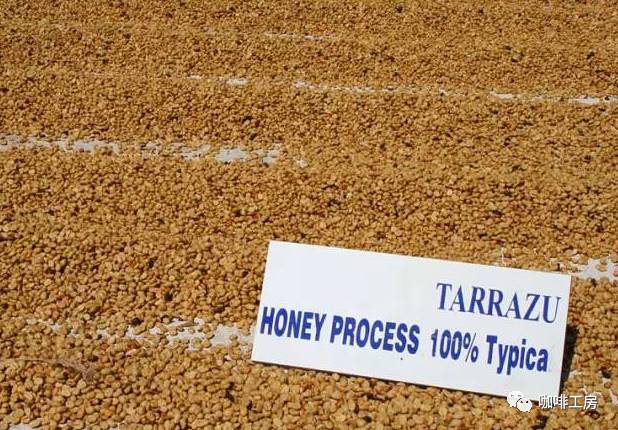
Shumawa Manor
There are seven coffee producing areas in Costa Rica, of which Tarazu, the central valley and the western valley are the three best-known and best-quality areas. Finca Sumava de Lourdes is located in the western valley of Costa rica, near Naranjo, 1700 meters above sea level, with 10 hectares of Villasarchi and Kaddura, 2 hectares of SL28, 1 hectares of geisha and other varieties. Francisco Men, the owner of the manor, and Jose Ordonez, the manager of the manor, lead a full-time team. In addition to growing a variety of coffee varieties, the park also reserves a large area of land as a forest reserve, giving wild animals a natural habitat. It is a high-quality coffee farm in Colombia.
Shumawa Manor, Costa Rica, is a very young manor; Francisco Mena, who was originally engaged in the coffee trade, bought the land and retained most of the original forests, only a small part of it was developed as a coffee growing area to maintain the natural ecological balance of the estate.
Shumawa Manor is about 1670-1790 meters above sea level. In the western valley, another well-known producing area in Costa Rica, the poor temperature, coupled with fertile soil, is very suitable for coffee cultivation.

The landowner Francisco Mena introduced a high-quality variety in the top 13 of the Super Cup, the bourbon mutant, Vera Saatchi (villa sarchi). This is a rare variety bred through the cross of red bourbon tree species. Strong wind resistance, preference for high altitude environment, excellent acidity and a variety of fruit aromas, high sweetness, bright and delicate citrus acidity and low raisin and nut aromas, high complexity and full balance.

Most of the manor is left to the forest to maintain the natural environment. In the manor arrangement, also took a lot of thought, for broken wood, rotten wood, weeds and so on do not use the traditional way of burning, but the wood is broken into pieces, and mixed with organic fertilizer, used as fertilizer on the farm. From the El Chayote reserve in the western valley, in the fertile volcanic soil of Po á s, facing convection and moisture in the Pacific Ocean, low temperature difference in the morning and evening and excellent micro-climate, this small area with a radius of 1 km has given birth to four champion estates! A real hero of the earth!
02 | processing method
Honey treatment method
Coffee beans treated with Costa Rican honey
Honey treatment, called HoneyProcess or Miel Process, is used in coffee gardens in Costa Rica (Costa Rica), Panama (Panama) and Guatemala (Guatemala), which is called Honey Coffee. The so-called honey treatment refers to the process of making raw beans with mucous membrane for sun-drying.
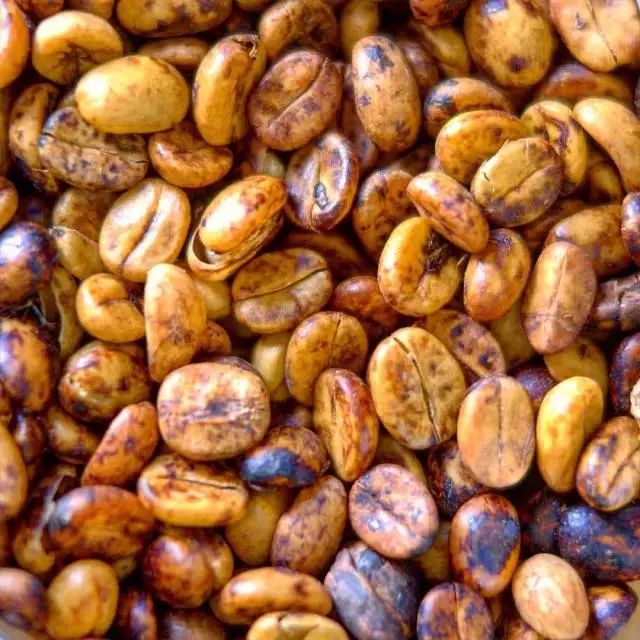
Manor owner Mena uses a unique sweet honey treatment, he calls it: sweet sugar process! Take the juice from the coffee berry treatment to soak the shell bean in the treatment, because the berry juice contains high sweetness and unique enzymes, the processed shell bean contains richer taste and very complex positive flavor!
The harvest season is usually from January to April every year, and because the temperature on the manor is only 10-20 degrees C, there are still freshly ripe coffee fruits in April! Simple understanding: the more pectin you keep, the richer and sweeter the coffee will eventually be. Here are several flavors of Costa Rican honey-treated coffee beans:

Pectin mucous membrane is the part with the highest content of coffee fructose, and it is also an important part of coffee fermentation. It can be said that 80% of this part determines the supply of nutrients in the process. Yellow honey retains 60% pectin, red honey retains 75% pectin, and black honey hardly removes pectin.
03 | Analysis of raw beans
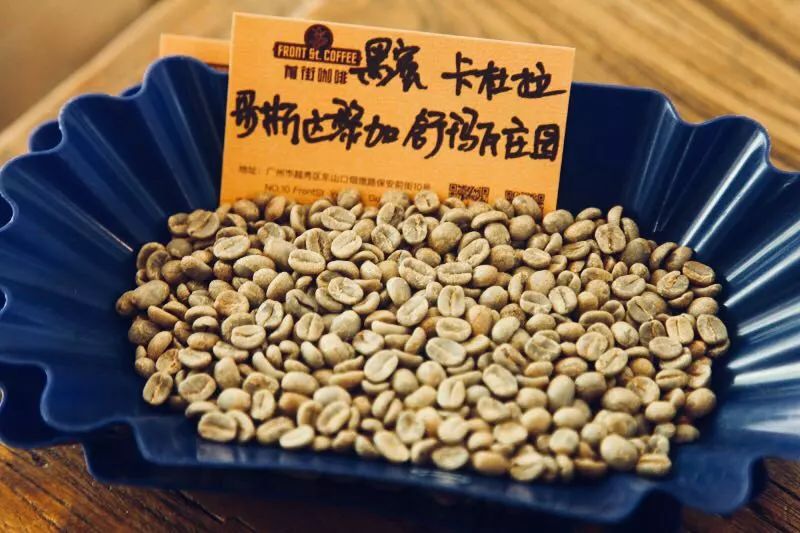
Raw bean information:
Producing area: Western Valley (West Valley)
Manor: Shumawa Manor (Finca Sumava de Lourdes)
Variety: Kaddura
Altitude: 1700 m
Treatment: black honey treatment (black honey)
Soil: volcanic geology
Harvest: December to March of the following year
Flavor description: black sugar, floral aroma, citrus, grapefruit, sweet spices, sweet and greasy taste
Kaddura, Katura Caturra,varietal Caturra,Coffea alabica var. Caturra .
The natural mutant of bourbon was first discovered in 1937 in the state of Sao Paulo, Brazil. At present, it is widely planted in Brazil, Colombia and other Central and South American producing areas.

Analysis on the suggestion of roasting coffee in Qianjie

Yangjia 800N, raw bean 550g, specific operation:
The furnace temperature is 200 degrees Celsius into the pot, the throttle is set to stew for 1 minute, the firepower is adjusted to 160C, the throttle remains unchanged, the furnace temperature is adjusted to 160C, the temperature is reduced to 135C, the temperature is baked to 540 ", the temperature is 154.9 degrees, the bean surface turns yellow, the smell of grass disappears completely, dehydration is completed, and the throttle remains unchanged.
In the 9th minute, ugly Hu wrinkles and black markings appear on the bean table, and the smell of toast obviously changes to the smell of coffee, which can be defined as a prelude to an explosion. At this time, listen clearly to the sound of an explosion point, to 9: 21 "start an explosion, adjust the firepower to 80 degrees, and the throttle is fully open at 5 degrees. (the firepower should not be so careful that there is no cracking sound) 50 degrees, 193.4 degrees when the pot.
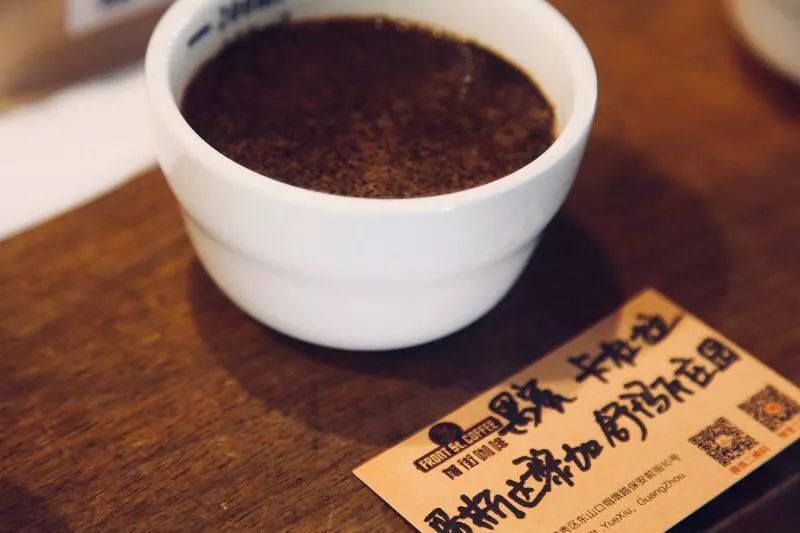
The taste of cup test
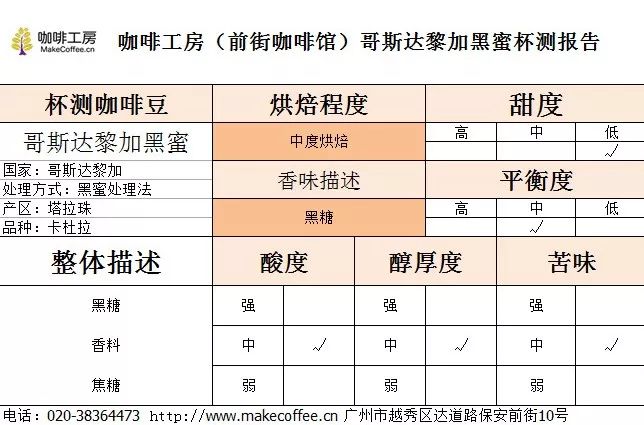
Qianjie coffee is recommended to be brewed.
Hand punch reference
Use key home filter cup, 16 grams powder 32 grams of water steaming for 30 seconds, 89-90 degrees water temperature extraction, 1:15, fine grinding small Fuji 3.5 second water injection to 110ml cut off, wait for water drop and then slowly water injection, uniform speed, the water level should not be too high, again water injection to 233ml stop, extraction time 2:15 seconds ~ rich sun sweetness, we can fine-tune according to their own taste.
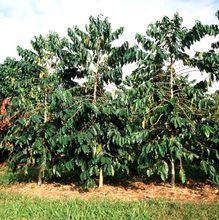
Costa Rica-Rose (Rosa) Manor
Costa Rican coffee is of the most stable quality in Central American coffee, mainly because it grows in the natural environment of complete tree shade and cool rainy night with large temperature difference in the morning and evening. Coupled with the rich soil and stable progress in the middle and rear treatment, Costa Rican coffee has a bad reputation, which has long been an indicator of Central American coffee. The more famous producing areas are the Tarazu Sanshui River and the Central Valley, etc., but inspired by the coffee cup test competition, many manors are becoming more and more refined. More and more small and beautiful previously unknown manors gradually increase their popularity so that the world can taste more levels, more kinds and more ways of handling Costa Rican honey to deal with coffee beans. Costa Rica's current treatment is also developing in many ways. In addition to the well-known traditional washing method and the most popular honey treatment (Miel Process), sun-dried beans are available even in this water-rich country, all to make up for the weakness of the taste.
The water treatment method emphasizes that the taste is clear and clean, and the acid is as quick as a razor, while the honey treatment emphasizes that the taste is complex and layered, reducing acidity and increasing sweetness. Washed beans have always been the most important method of coffee treatment in Costa rica. some coffee lovers like the sweet sweetness of honey treatment and the delicate aftertaste of toffee. However, although washed Costa Rican beans do not have pleasant sweetness, but clean, bright and high taste and always meticulous and vibrant acidity, they always maintain a good impression of high-quality coffee in the mainstream with sweetness as the king.
Rosa is the Spanish word for Rose and the English word for rose
Located in the western valley of Costa Rica with the most outstanding coffee quality in recent years, the Naranjo cooperative is even better than the Tarazhu producing area, which is well known to the Chinese people. Coffee grows in fertile land and pure spring water at an altitude of 1100 ~ 1300 meters. About 2360 members are busy with harvest in December and February each year. After drying, the coffee is wrapped in parchment to maintain a humidity of 12.14%, with Kaddura and Kaduai as the main species. The same Naranjo cooperative honey handling beans also break the previous standard of Costa Rican honey treatment. In February, we just collected washed beans from Naranjo Cooperative Rose (Rosa is Spanish and English Rose translated as roses). The perfect color and size of defective beans are the same, and dander, empty shell beans and clean beans are a high-quality Costa Rican mountain bean (SHG).
Shallow roasting end (City): coffee grinded with drupe and orange aroma, brewed with alpine tea aroma, Costa Rican water-washed beans with thin, sharp citric acid that is not so strong and gentle and friendly, balanced, thin and pure without dryness, no impurities, sweet orange pear fruit, very delicate tea after rhyme.
60 seconds after baking (Full City-): coffee is full of creamy aroma of creamy popcorn after grinding, with the fragrance of Hawthorn and bergamot when brewing, the taste is smooth, delicate, even and pleasant, the slight fruit acid is cool in the mouth, the sweetness of honey brown sugar is really sweet and floats on the coffee, and the finish rhyme has elegant sweet-scented osmanthus fragrance.
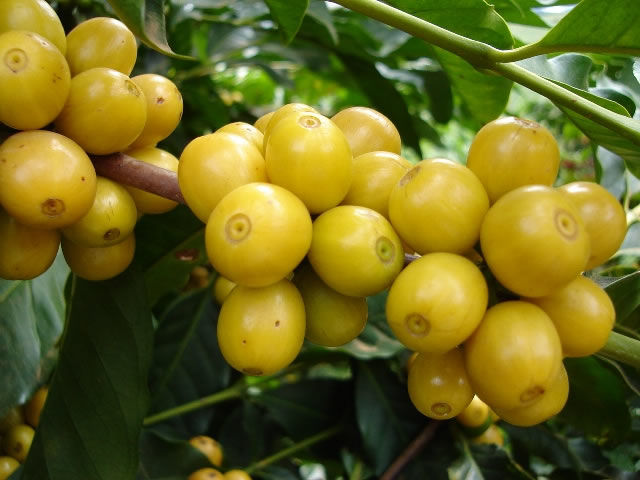
Cup test date: 2010.08.02
Dry aroma: 9
Wet aroma: 8
Clean: 10
Brightness: 7
Taste: 8
Balance: 10
Complexity: 6
Sweetness: 10
Acid quality: 8
Yu Yun: 9
Cup test score: 85
Overall comment: the sharp, bright and thin lemon acid has always been the impression of Costa Rican watered beans, but Rose Manor deviates from this impression and attracts our attention with the pure, light, impurity-free aroma of alpine tea. we do not recommend heavy baking (second explosion) because the nutty aroma with chocolate can be found in honey-treated Costa Rican coffee.
Important Notice :
前街咖啡 FrontStreet Coffee has moved to new addredd:
FrontStreet Coffee Address: 315,Donghua East Road,GuangZhou
Tel:020 38364473
- Prev
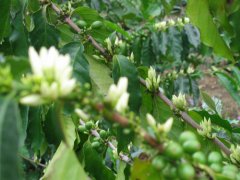
Guatemala Vivette Nango-Limonar Manor Baking suggestion, Cup Test score
For the exchange of professional baristas, please pay attention to the coffee workshop (Wechat official account cafe_style) SHB of Guatemala-Limonar Manor Coffee is the most important economic income of Guatemala. About 125,000 people are engaged in coffee production. The largest export products account for 40% of the total export earnings. Coffee beans and coffee are grown in almost all regions of the country.
- Next
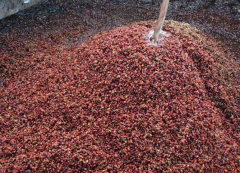
Niagara Notega-UCASUMAN Coffee Cooperative Baking suggestion and Flavor description
Professional barista exchanges please pay attention to the coffee workshop (Wechat official account cafe_style) Nicaragua Guardia Notega-UCASUMAN coffee cooperative organic beans Nicaraguan coffee is not well-known in Taiwan in recent years, except for the traditional high-altitude typical tree species such as beans (M aragogype) and Java tree beans, ordinary coffee lovers seldom mention him, in fact, Nicaragua
Related
- Does Rose Summer choose Blue, Green or Red? Detailed explanation of Rose Summer Coffee plots and Classification in Panamanian Jade Manor
- What is the difference between the origin, producing area, processing plant, cooperative and manor of coffee beans?
- How fine does the espresso powder fit? how to grind the espresso?
- Sca coffee roasting degree color card coffee roasting degree 8 roasting color values what do you mean?
- The practice of lattes: how to make lattes at home
- Introduction to Indonesian Fine Coffee beans-- Java Coffee producing area of Indonesian Arabica Coffee
- How much will the flavor of light and medium roasted rose summer be expressed? What baking level is rose summer suitable for?
- Introduction to the characteristics of washing, sun-drying or wet-planing coffee commonly used in Mantenin, Indonesia
- Price characteristics of Arabica Coffee Bean Starbucks introduction to Manning Coffee Bean Taste producing area Variety Manor
- What is the authentic Yega flavor? What are the flavor characteristics of the really excellent Yejasuffi coffee beans?

